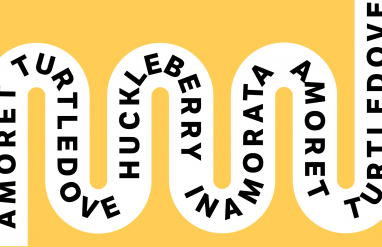“Eat your vegetables!” is a common refrain of many parents everywhere to their children. There’s even a National Eat Your Vegetables Day to encourage this behavior (it’s June 17, in case you’re planning on celebrating). But what is a vegetable? It might surprise you to learn that, according to biologists, many of what we consider vegetables are technically fruit. (Learn more about that by reading our article about what distinguishes fruits from vegetables.) In everyday conversation, though, vegetables are savory “plants or plant parts that we use as food,” while fruits are sweet.
There is a bunch of different ways you can categorize vegetables. Because these are more or less informal designations, and it varies depending on what part of the plant you are eating, sometimes a plant belongs in more than one category. We are going to look at the dominant categories of vegetables and some of the popular veggies that fall into each.
legumes
Legumes are vegetables that come from the plant family Leguminosae or Fabaceae. The word legume itself comes from the French légume which means… “vegetable.” (Shocker!) The dried grain of a legume is known as a pulse and includes cheap, popular, nutrient-packed vegetables like dried lentils.
Examples of legumes are:
Often okra, a fleshy, edible pod common in hot, humid climates is considered a legume because it looks something like a green bean. However, it’s actually a fruit from a plant in the mallow family.
root and tuberous vegetables
Many root and tuberous vegetables are so delicious that it can cause some confusion as to whether they are vegetables at all. A root vegetable is, well, a vegetable that is a root. A tuberous vegetable or tuber is slightly different. A tuber is technically an underground stem of a plant that stores nutrients. If you cut the node or “eye” off a tuber and plant it, you can grow a whole new plant! However, roots and tubers are often grouped together because they look very similar and both grow underground.
Examples of root or tuberous vegetables are:
Many root or tuberous vegetables, like potatoes and yams, are what are known as starchy vegetables. Other starchy vegetables are grains such as corn, rice, and wheat, although these are generally not considered vegetables as such because they are essentially large grasses and do not contain as many nutrients. A starch is a kind of carbohydrate.
cruciferous vegetables
Cruciferous vegetables get their name from the cross-shaped arrangements of their leaves. Cruciferous literally means “cross-bearing.” These vegetables belong to the family Cruciferae, also known as Brassicacae. In the UK, these veggies also go by the name brassica, from the name of the family.
Examples of cruciferous vegetables are:
In the US, the alternative term for many of these vegetables is cole crop, from the Latin caulis meaning “stem.” These vegetables are high in fiber and can be hard for some people to digest.
alliums
Alliums are the vegetables that add a punch to your dishes. Alliums come from the genus Allium, a name which comes from the Latin name for garlic. While we are most familiar with alliums for their tasty bulbs, such as garlic, they also have beautiful purple, blue, or white globe-shaped flowers.
Examples of alliums are:
nightshades
Vegetables known as nightshades come from the genus Solanum. If the name rings a bell, that’s because one of the most notorious nightshades is the deadly nightshade, also known as belladonna, which is a toxic plant used as a poison in many paperback mysteries. But the fruits of its cousins are safe for human consumption… although you still wouldn’t want to eat their leaves or stems.
Examples of nightshade are:
- tomato
- eggplant (US)/aubergine (UK)
- bell pepper
- chili pepper
cucurbits or gourds
The technical name for a gourd is a cucurbit. The name cucurbit comes from the Latin for “a cupping glass,” which was a vessel used for distillation or purification in chemical or alchemical processes as part of an alembic, and was shaped—you guessed it—like a gourd.
Examples of cucurbits:
leafy greens
Leafy green vegetables are, simply, the edible leaves of plants. Sometimes the leaves of other vegetables we have already talked about, like that of beets, can be considered leafy green vegetables in their own right.
Examples of leafy greens:
stalk vegetables
One of the less common categories of vegetables is known as stalk vegetables. These are plants that have edible stems. These veggies also often include leafy greens because you can eat both the stems and the leaves, like Swiss chard.
Examples of stalk vegetables:
The FDA recommends adults get 4-5 servings of fruit and vegetables a day. We have got our vegetables covered for today, but what about the fruit? You can round out your diet with some servings of fruit here. And if you’re feeling pea-brained and want to find a great way to retain the knowledge you’ve learned here, check out our vegetables word list.














